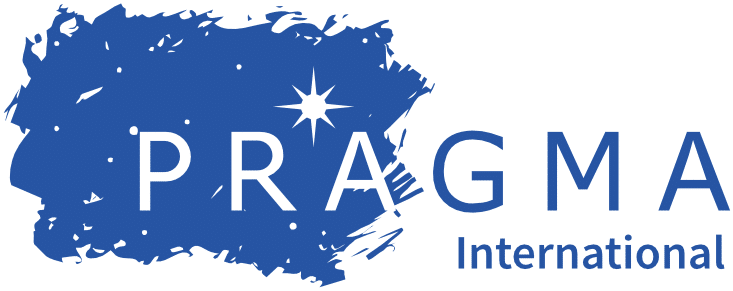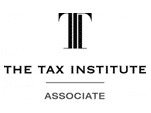And – by extension – your risk of engaging in misleading and deceptive conduct? While a recent Federal Court decision of Brick Lane Brewing Co Pty Ltd v Torquay Beverage Co Pty Ltd [2023] FCA 66 (Brick Lane v Torquay) focuses on the key question of whether a similar “get-up” or packaging of beer products is likely to mislead or deceive the reasonable consumer, the fact that both products had health and nutrition marketing messages affected the legal outcome. This article examines this Federal Court decision particularly through the lens of how making health and nutrition content claims changes who the reasonable consumer of your product is and how that in turn changes what they expect of your product.
Why is the reasonable consumer relevant to marketing risk?
Misleading or deceptive get-up arises under section 18 of the Australian Consumer Law (the ACL) where the appearance of a product (such as its colour scheme) misleads a person to believe that the product is associated with the claimant’s product or business. When a Court assesses whether someone engages in misleading and deceptive conduct, it must:
- determine who the “reasonable consumer” of marketing messages is;
- then try to determine what said reasonable consumer believes or expects from the marketing; and
- then look at whether the product actually meets those beliefs or expectations (known in legal jargon as “substantiating” the claim).
In a saturated market, it’s likely that products will cross over and cause some consumers to question a product’s provenance. To be found to have engaged in misleading and deceptive conduct (and therefore in breach of the ACL), the “reasonable consumer” must believe that a product is from another brand. This also applies to the tort of “passing off”, where one company passes their product off as a another’s and so benefit from a market reputation that they have not earned. As Justice Stewart pointed out in Brick Lane v Torquay, merely because consumers may “wonder” whether products are from the same brand, this does not necessarily constitute misleading or deceptive conduct.
What did the reasonable consumer believe in this case?
Notably in this case, the products, Sidewinder Hazy Pale (produced by Brick Lane Brewing Co Pty Ltd (Brick Lane)) and Better Beer (produced by Torquay Beverage Co Pty Ltd (Torquay)), launched into the market a mere five days apart in July 2021, each featuring curved striped packaging of blue, orange, yellow and off white. Brick Lane emphasised to the market that the Sidewinder Hazy Pale contained low alcohol volume of 1.1% ABV, whereas the Better Beer product was promoted as a full strength lager containing no carbohydrates.[1]
Brick Lane argued that Torquay falsely, misleadingly or deceptively represented to consumers that Better Beer products are part of the Sidewinder range. However, Justice Stewart held that Brick Lane’s claim could not be upheld. Justice Stewart’s reasoned that the timing of the launches of both of the products meant that consumers had no appreciable knowledge of Sidewinder as a product or brand as of yet, and therefore it was unlikely that consumers would confuse Better Beer with Sidewinder.[2]Further, the development of the products was entirely sperate and the parallels between the branding and the design of the products were not considered to be so influential as to cause confusion. Brick Lane claimed that the name ‘Better Beer’ suggests that the beer is ‘better-for-you’ and therefore the reasonable consumer associates the beer as a healthy choice relative to other products. Justice Stewart dismissed this claim, stating:
‘the reasonable consumer would understand the name to be suggesting that it is “better-for-you” beer. However, I do not accept that that would in any material way contribute to confusion between the parties’ respective products.’[3]
Ultimately, Justice Stewart was not satisfied that the reasonable consumer of beer would have particular familiarity with the Sidewinder range and, even if the reasonable consumer did have familiarity, the Better Beer get-up has distinct differences from Sidewinder so as to not cause confusion.
Who is the reasonable consumer?
The definition of a reasonable consumer was established in the case of Parkdale[4] which states that a reasonable consumer is a reasonable member of a class and includes those who are inexperienced and experienced. The definition of a reasonable consumer does not include those who fail to take reasonable care of their own interest.[5] In the case of Brick Lane and Better Beer, Justice Stewart suggested that the reasonable consumer takes ‘… reasonable care of their own interest’. Going on to explain:
It is precisely because of the huge variety in beers and the way in which they are presented that the hypothetical reasonable beer purchaser is likely to have to pay close attention to just what it is that they are taking off the shelf, or clicking on, to ensure that they get what they want. There’s a lot to choose from, and a lot to look out for. A consumer wanting a low alcohol beer will be disappointed to find that they had erroneously bought a low carbohydrate full strength alcohol beer, and vice versa. Someone wanting a lager or a pilsner will be disappointed if they erroneously walk out with a pale ale, and so on.[6]
Justice Stewart emphasised that where claims are made on products, such as beer, the reasonable consumer is taken to care for their own interests and are paying attention to what they are purchasing. Justice Stewart stated:
The short point is that the hypothetical reasonable consumer of beer must be taken to take reasonable care of their own interests. That includes paying enough attention to what they are buying in a crowded and bewildering market so as to be able to distinguish between low alcohol and low carbohydrate products and to notice the names of the relevant products. I do not see that consumer fleetingly taking something from the shelf, or clicking on an icon, because of some similarity of colouring and design that they might remember from a previous purchase. That is particularly so in the present case given the distinctly different names and the clarity of the statements on the packaging as to the different nature of the products, ie, low alcohol and low carbohydrate.[7]
With these statements in mind, it can be discerned that the reasonable consumer recognises and understands health and nutrition claims and, as a result, reasonable consumers are becoming more difficult to mislead. It is also commonly understood that nutrition and health claims can play a significant part in the consumer decision–making process and these claims are powerful drivers in product sales. This is particularly the case for categories of product where consumers may previously have “fleetingly taken something from the shelf” and been misled (such as beer), but who the reasonable consumer is and whether they have been misled is changed by distinguishing the product based on its nutritional advantages.
In a similar context, claims regarding where and how the product is made also influences who the reasonable consumer is. By way of example, in 2013 the Australian Competition and Consumer Commission (ACCC) took action against Carlton United Breweries (CUB) for misleading consumers to believe their Byron Bay Pale Lager brewed in Byron Bay. While the brand was established in Byron Bay, brewing of the product had been licensed to CUB and was subsequently brewed in their Warnervale brewery, more than 600km away from Byron Bay.[8] Former ACCC Chairman Rod Sims stated:
When large companies portray themselves as small businesses, it undermines the unique selling point that such small businesses depend on and mislead the consumers.[9]
Key takeaways
This case emphasises that when considering whether a consumer has been misled, we need to understand consumer behaviour.
Justice Stewart’s decision recognises that not only do health and nutrition claims shape a product’s target market and drive product sales, but also give rise to more considerations around who the reasonable consumer is, and emphasises that where health and nutrition claims are present, the reasonable consumer is likely to be more discerning and aware of their purchase choices. Therefore by default the reasonable consumer is less likely to be misled but also has higher expectations.
If you have any questions about product labelling, or need advice on any food or beverage regulatory issue, feel free to contact a member of our Food & Beverage team via food@khq.com.au.
This article was written by Molly Richardson (Lawyer) and Charles Fisher (Principal Solicitor).
Want Food & Beverage updates delivered straight to your inbox? Click here to subscribe.
[1] Brick Lane Brewing Co Pty Ltd v Torquay Beverage Co Pty Ltd [2023] FCA 66, 14 – 21.
[2] Brick Lane (n 1) [97].
[3] Brick Lane (n 1) [101].
[4] Parkdale Custom Built Furniture v Puxu [1982] HCA 44; 149 CLR 191, 199.
[5] Ibid.
[6] Brick Lane (n 1) [107].
[7] Brick Lane (n 1) [109].
[8] Australian Competition & Consumer Commission (ACCC), ACCC acts on beer labelling (29 April 2014).
[9] Ibid.








